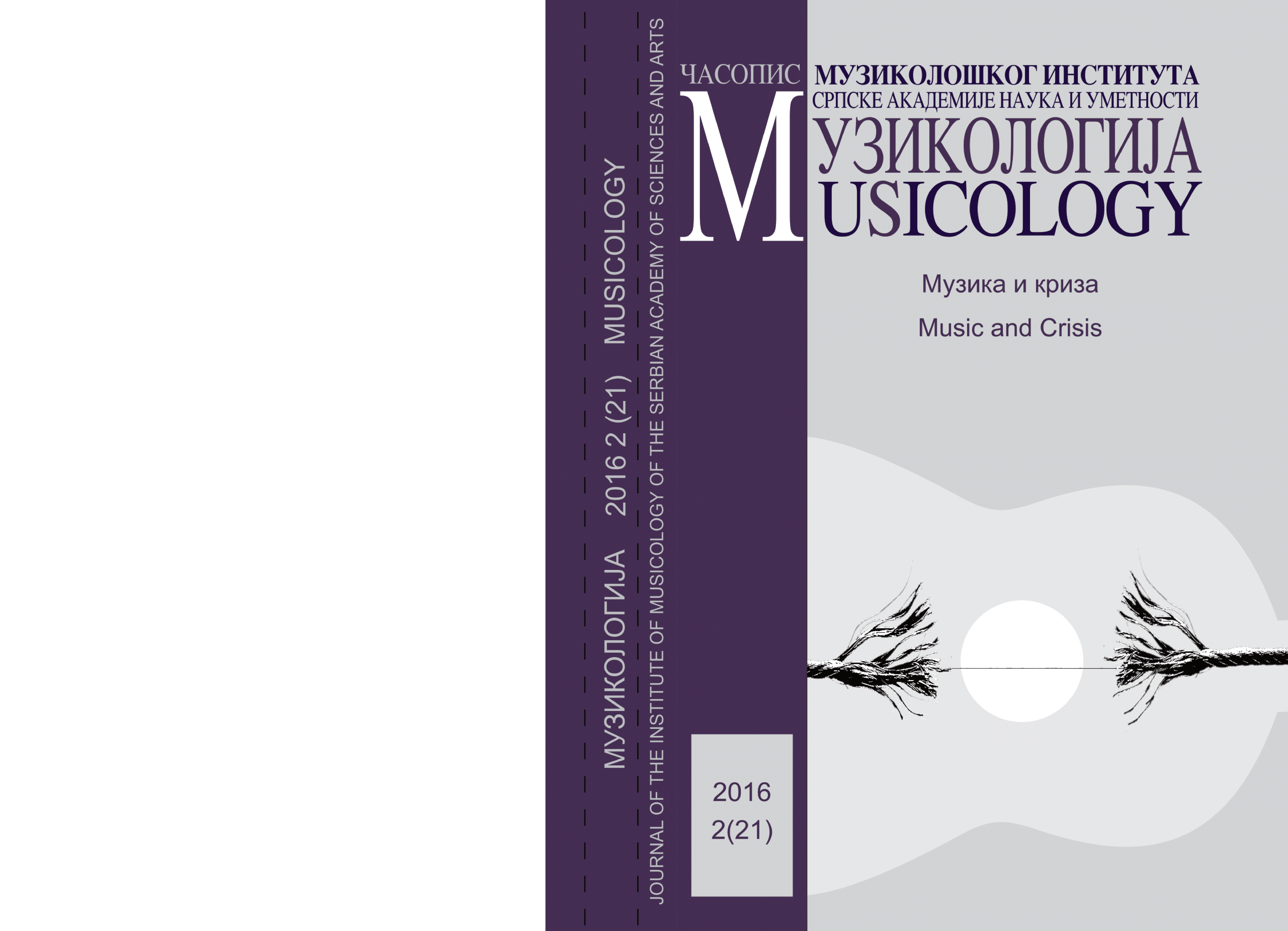Overcoming the Crisis of Tonality: The Resemantized Tonality of Modernism
Keywords:
major-minor tonality, resemantized tonality, chromatic tonality, crisis of tonality, generalization, neutralizationAbstract
In this article I analyse the context and features of resemantized tonality, historically linked with the first half of the 20th century. The renewed interest in tonality occurred after the crisis of tonality — the system that prevailed in music until its ‘collapse’ in the late 19th and early 20th century. The consequence of the crisis was the emergence of atonality, as well as different tonal idioms which are here collectively referred to as “resemantized tonality”. This reaction led to a whole series of works based on the concept of linguistic-stylistic resemantization in the context of modernist expression. I will discuss some of the basic characteristics and linguistic strategies of the resemantized tonality that have established it as an autochthonous linguistic-grammatical system. Furthermore, I will analyse two highly illustrative works: Sergei Prokofiev’s Symphony No. 1 Classical and Paul Hindemith’s cycle of solo songs The Life of Virgin Mary.
References
Dahlhaus C. (1989) Nineteenth-Century Music, translated by J. Bradford Robinson, Berkeley, Los Angeles, London: University of California Press.
Ducrot O, Todorov T. (1972) Dictionnaire encyclopédique des sciences du langage, Paris: Éditions du Seuil.
Flaker A. (1984) Poetika osporavanja [The Poetics of Denial], Zagreb: Školska knjiga.
Hanslick E. (1891) The beatiful in Music, translated by G. Cohen, London: Novello and Company.
Hatten R. (1999) “Metaphor and Music”, in E. Tarasti (ed.) Musical signification, Berlin: Mouton de Gruyter.
Lippman E. (1999) The Philosophy and Aesthetics of Music, Lincoln: University of Nebraska Press.
Meyer, L. (1996) Style and Music, Chicago and London: The University of Chicago Press.
Monelle R. (1995) “Music and Semantics”, in E. Tarasti (ed.) Musical signification, Berlin: Mouton de Gruyter.
Rilke R. M. (2011) Selected Poems, translated by A. E. Fleming, Milton Park, New York: Routledge Taylor & Francis Group.
Samson, J. (1979) Music in Transition, London, J. M. Dent.
Strauss, J. (1990) Remaking the Past, Musical Modernism and the Influence of the Tonal Tradition, Cambridge, Massachusetts, and London: Harvard University Press.
Stravinsky I. (1947) Poetics of Music, translated by A. Knodel and I. Dahl, Cambridge, Massachusetts: Harvard University Press.
Teparić S. (2007) „Razlike u tretmanu tonalnih modela prošlosti u drugoj polovini XIX i u prvoj polovini XX veka”, Zbornik katedre za Muzičku teoriju, Beograd: Fakultet muzičke umetnosti, 123-143.
Teparić S. (2009) „Resemantizacija tonalnosti i njene stilske implikacije u ciklusu solo pesama Marijin život Paula Hindemita, Zbornik katedre za Muzičku teoriju, Beograd: Fakultet muzičke umetnosti [“Resemantization of Tonality and its Stylistic Implications in the Song Cycle The Life of Mary by Paul Hindemith”, Collection of papers of the Department for Music Theory, Belgrade: Faculty of Music].
Ulehla L. (1994) Contemporary Harmony, London: Advance Music.
Veselinovic-Hofman M. (2007) Pred muzičkim delom, Beograd: Zavod za udžbenike i nastavna sredstva.
Downloads
Published
Issue
Section
License
Copyright (c) 2016 MUZIKOLOGIJA-MUSICOLOGY

This work is licensed under a Creative Commons Attribution-NonCommercial-NoDerivatives 3.0 Unported License.
You are free to:
- Share — copy and redistribute the material in any medium or format.
The licensor cannot revoke these freedoms as long as you follow the license terms.
Under the following terms:
-
Ауторство — You must give appropriate credit, provide a link to the license, and indicate if changes were made.
You may do so in any reasonable manner, but not in any way that suggests the licensor endorses you or your use. -
Некомерцијално — You may not use the material for commercial purposes.
-
NoDerivatives — If you remix, transform, or build upon the material, you may not distribute the modified material.
- No additional restrictions — You may not apply legal terms or technological measures that legally restrict others from doing anything the license permits.



